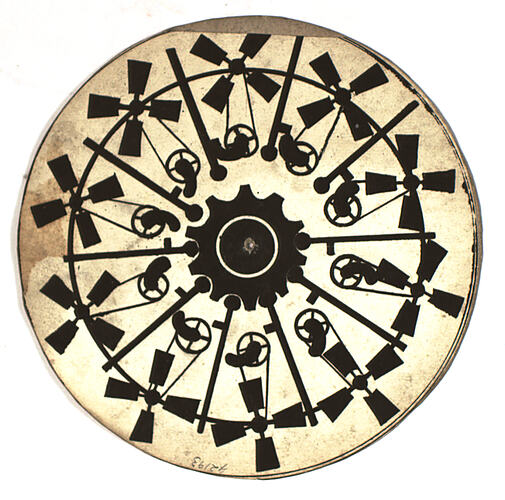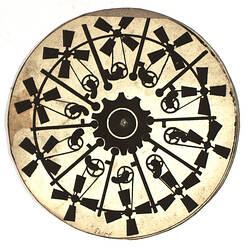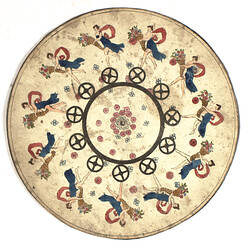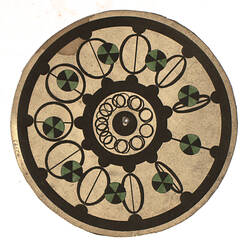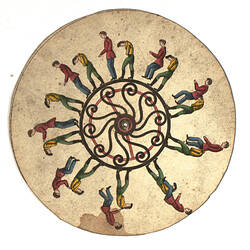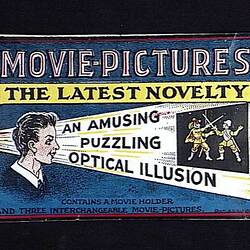Summary
Two double-sided phenakistoscope discs featuring sequential still images. They are components of the phenakistoscope, an animation device. These discs were interchangeable and various scenarios illustrating movement were available.
The phenakistoscope disc has a number of regularly spaced slits in the circumference of the disc. To create the animation the disc is fitted onto a central handle; the viewer then faces a mirror, with the image likewise facing the mirror. To view the animation the disc is spun, and the viewer looks through the slits at the mirror.
The phenakistoscope was part of a range of popular philosophical or optical toys created in the 19th century. Like the phenakistoscope, most attempted to create the illusion of movement using a series of static images.
These phenakistoscope discs are part of the Francis Collection of pre-cinematic apparatus and ephemera, acquired by the Australian and Victorian Governments in 1975. David Francis was the curator of the National Film and Sound Archive of the British Film Institute as well as being a co-founder of the Museum of the Moving Image in London, which was operational between 1988 and 1999.
Description of Content
Phenakistiscope discs. Two double-sided discs.
More Information
-
Collection Names
-
Collecting Areas
-
Acquisition Information
Loan & Subsequent Donation from Australian Film Institute (AFI), Mr David Francis, by Nov 1990
-
Collector
Mr David Francis, London, Middlesex, England, Great Britain, 1990
-
Inventor
-
Inventor
-
Format
Phenakistoscope Disc, Black & White
-
Classification
-
Category
-
Discipline
-
Type of item
-
Exhibition Collection Management
195 mm (Width), 265 mm (Height)
-
Keywords
Animation, Motion Picture Films, Optical Illusion Devices, Phenakistiscopes, Phenakistoscopes, Pre-Cinema Moving Images
